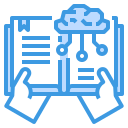Innovative Learning: How Digital Tools are Shaping Education Today
As the world rapidly evolves, the landscape of education is experiencing a transformation driven by technology. Digital tools are redefining the way students learn, teachers instruct, and knowledge is shared and cultivated globally. Innovative learning, enabled by these digital advancements, presents unique opportunities and new challenges. This page explores how technology is revolutionizing classrooms, personalizing learning experiences, fostering collaboration, and preparing the next generation for a digital future.
The Digital Classroom Revolution
Enhancing Engagement Through Interactive Technology
Digital tools like smartboards, tablets, and educational apps have made classroom engagement more dynamic than ever. By using interactive multimedia elements, teachers can present complex topics in visually compelling and accessible formats. Real-time quizzes, simulations, and collaborative exercises replace passive learning with active participation. These tools cater to various learning styles, ensuring that visual, auditory, and kinesthetic learners can all benefit. As a result, students are not just absorbing information passively; they are interacting with content, asking questions, and participating in a lively exchange of ideas that helps deepen understanding and retention.
Virtual Learning Environments and Accessibility
Virtual classrooms have expanded access to education for many who were previously restricted by geography, mobility, or circumstance. Digital learning management systems enable students and educators to interact, access resources, and complete assignments from any location. This connectivity breaks down traditional barriers, making education more inclusive. Students can revisit recorded lectures, participate in forums, and receive instant feedback, leading to a flexible and equitable educational experience. For learners with disabilities, customized interfaces and assistive technologies provide additional support, ensuring that digital education is accessible to all.
Data-Driven Insights for Educators
Teachers now have access to a wealth of data collected through digital platforms, helping them better understand student performance and needs. Learning analytics track participation, completion rates, and comprehension, allowing for timely interventions and tailored instruction. This empowers educators to quickly identify students who may need extra support or those who are ready for more advanced challenges. In turn, this data-driven approach enhances educational outcomes by promoting continual monitoring, personalized learning paths, and evidence-based teaching strategies.
Personalization and Adaptive Learning
Tailoring Content to Student Needs
Adaptive learning platforms use algorithms to present materials matched to a student’s current knowledge and abilities. This means that learners who grasp concepts quickly can advance without waiting, while those who need more practice receive targeted exercises and feedback. Teachers can assign unique lesson paths based on data insights, ensuring optimal challenge and support for each student. By harnessing digital content that adapts in real time, education becomes a truly individualized experience, helping all students reach their potential.
Encouraging Self-Paced Learning
Digital tools support self-paced education, permitting learners to progress as quickly or slowly as they need. Online modules, recorded lectures, and interactive exercises offer opportunities to revisit challenging concepts or jump ahead when appropriate. This flexibility empowers students to take ownership of their education, minimizing frustration and maximizing achievement. The result is a more positive learning environment where pressure is reduced, curiosity is fostered, and students can confidently explore topics at their own comfort level.
Fostering Intrinsic Motivation Through Gamification
Gamification—the integration of game-design elements into learning platforms—has transformed digital education by making it more enjoyable and motivating. Features like point systems, badges, leaderboards, and challenges incentivize progress and reward achievement. These elements stimulate intrinsic motivation, encouraging students to set goals, monitor their progress, and persist in the face of difficulties. Additionally, gamified environments create a sense of accomplishment that fosters ongoing engagement and a love for lifelong learning.
Connecting Classrooms Across Continents
The integration of digital communication tools allows classrooms to connect with peers worldwide, breaking down cultural and linguistic barriers. Students can work together on joint projects, participate in exchange programs, and engage in meaningful dialogues with classmates from different countries and backgrounds. This global exposure not only enriches curricular content but also cultivates empathy, open-mindedness, and cross-cultural competence—skills that are increasingly essential in today's interconnected world.
Real-Time Collaboration on Digital Platforms
Cloud-based applications like shared documents, virtual whiteboards, and group chat functions facilitate real-time collaboration among students, regardless of location. Group assignments and brainstorming sessions can happen seamlessly online, allowing individuals to contribute ideas, edit work, and provide feedback instantly. These platforms teach vital communication and teamwork skills, preparing students for future professional environments where digital collaboration is the norm. The ability to coordinate efforts and solve problems together in virtual spaces redefines teamwork and collective achievement.
Developing Digital Citizenship and Communication Skills
Participating in online educational communities provides students with invaluable opportunities to develop digital citizenship. They learn about respectful communication, online safety, and responsible content sharing. By navigating digital environments under guided instruction, learners practice essential skills such as online etiquette, critical evaluation of sources, and effective digital communication. This foundation is crucial for responsible participation in the digital world, ensuring students are not only knowledgeable but also ethical and conscientious users of technology.
Previous slide
Next slide
